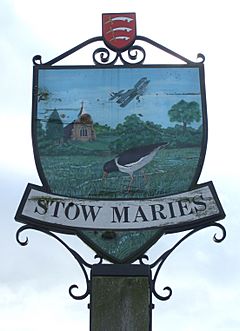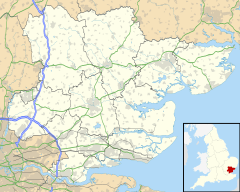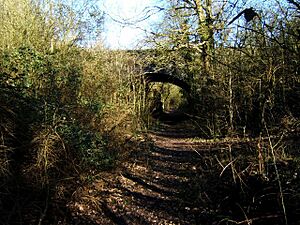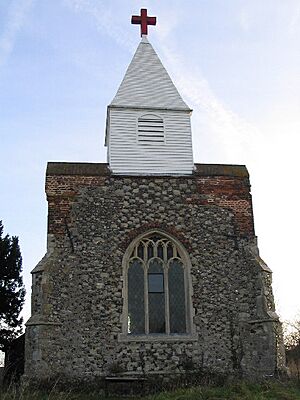Stow Maries facts for kids
Quick facts for kids Stow Maries |
|
|---|---|
 Village Sign |
|
| Population | 214 (2011) |
| OS grid reference | TQ833995 |
| District |
|
| Shire county | |
| Region | |
| Country | England |
| Sovereign state | United Kingdom |
| Post town | Chelmsford |
| Postcode district | CM3 |
| Dialling code | 01245 & 01621 |
| Police | Essex |
| Fire | Essex |
| Ambulance | East of England |
| EU Parliament | East of England |
| UK Parliament |
|
Stow Maries is a small village in the county of Essex, England. It is located on the western edge of the Dengie peninsula, which is a piece of land surrounded by water on three sides. The village is part of the Maldon district.
The name 'Stow Maries' has a long history. It first appeared as Stowe in records from 1230. Later, in 1420, it was called Stowe Mareys. The name means 'place belonging to the Marisc family'. This family, the Marisc family, owned the land around 1250. Their name comes from Marais in France, which means 'marsh' or 'wetland'.
Contents
Stow Maries Aerodrome: A Historic Airfield
An Aerodrome (which is like a small airport) was built at Stow Maries in September 1916. This was during the First World War. It was used by the Royal Flying Corps, which was the air force of the British Army at the time.
After the war ended in 1919, fewer airfields were needed, so Stow Maries Aerodrome was closed. During the Second World War, people thought about using it again. However, the clay soil made it unsuitable for planes. Even though it wasn't officially reopened, it still played a role. It was bombed by the Luftwaffe (the German air force). It was also used as an emergency landing spot by a damaged Hurricane fighter plane.
Restoring the Aerodrome
Many of the original airfield buildings are still standing today. They even have their first windows! These buildings were used to store grain and farm vehicles until 2008.
Later, the airfield was bought by Steve Wilson and Russell Savory. They are working to restore it to how it looked in 1919.
Since 2014, there has been a special project to remember the 100th anniversary of World War I. The WW1 Aviation Heritage Trust Ltd (from the UK) is working with groups from New Zealand. They plan to bring 5 to 8 different World War I aircraft to the UK. These planes will help tell the story of air combat during the Great War.
The plan is for these historic aircraft to be based at the Stow Maries Great War Aerodrome. There will also be a training program for young people. This program will teach them how to preserve and restore World War I aircraft. The goal is to create a special center dedicated to keeping the history of aviation from the war alive.
Stow Maries Halt: From Railway to Nature Reserve
Stow Maries used to have a small train station called Stow St Mary Halt railway station. It was on the train line that went from Woodham Ferrers to Maldon. This station served the village until it closed in 1939.
Today, the train tracks have been removed. The area where the station was, along with a nearby field, is now a nature reserve. It is called Stow Maries Halt nature reserve. The Essex Wildlife Trust manages this special place. You can reach it from Church Lane.
Local Amenities: What's in the Village?
Stow Maries has one public house, which is a traditional British pub, called The Prince of Wales. The village also has a table tennis team that practices in the Smythe Hall. There are many footpaths for walking. Part of the old railway line is now used as a path for cycling.
Religious Sites: The Village Church
The local church in Stow Maries is called the Church of St Mary and St Margaret. It is part of the Diocese of Chelmsford.
The oldest parts of the church, like the chancel (the area around the altar), were built in the 14th century. The nave (the main part of the church where people sit) was built in the 15th century and made larger in the 16th century.
Some repairs and updates were done to the church in 1870. A small room called the north vestry was added in 1912 and rebuilt in 1950.
The old house where the church's rector (a type of priest) used to live, now called The Old Rectory, was built in 1799. It is believed that a famous landscape designer named Humphry Repton helped design it.




